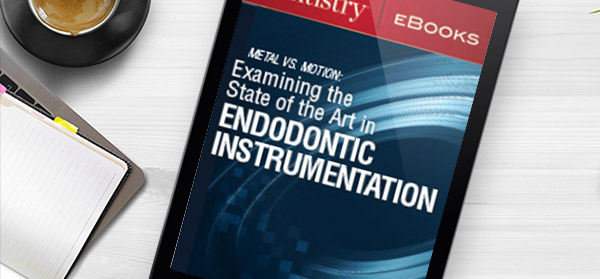EBOOKS & WHITEPAPERS
Metal vs. Motion: Examining the State of the Art in Endodontic Instrumentation

Today’s market includes more than 35 different NiTi file systems, each claiming unique features and advantages. These NiTi files are available in a continuum between Austenitic and Martensitic phases, each with respective advantages and disadvantages. Instead of trying to work with a file that incorporates some elements of both phases, clinicians can utilize a system that includes files from both ends of the spectrum—in the part of the canal where each type of file excels.
Although continuous rotation is the ideal motion for root canal debridement, rotary motion puts more torsional stress on the instruments. Reciprocation reduces the torsional stress on the instruments, but it has some disadvantages. To address these issues, a new, smart endo handpiece provides all of the benefits of both continuous rotation and reciprocation without the associated disadvantages.
When choosing an endodontic system, clinicians should be aware of the applications, benefits, and limitations of new file systems and should also consider recent advancements in endodontic handpiece technology. These new technologies work synergistically to deliver enhanced safety and efficiency to the endodontic procedure.
Key takeaways from this eBook include:
- An instrument’s metal composition, surface/heat treatment, design characteristics, and even its motion during use impacts its clinical performance
- NiTi files are available in a continuum between Austenitic and Martensitic phases, which excel in different parts of the canal
- New handpieces with smart motors help overcome the inherent shortcomings of each metallurgy
Download eBook
"*" indicates required fields
